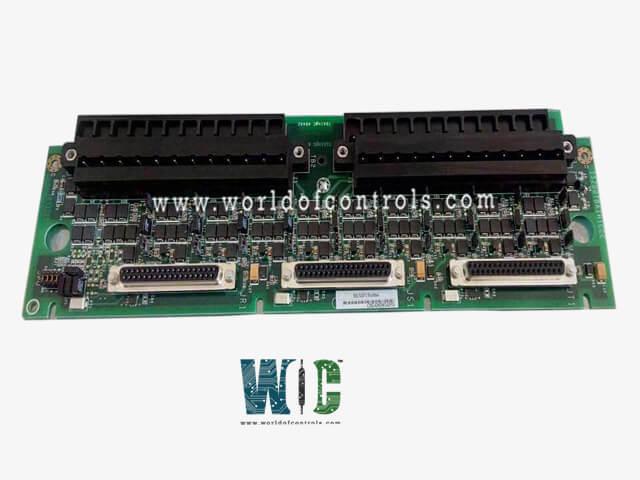
World Of Controls understands the criticality of your requirement and works towards reducing the lead time as much as possible.
IS200TBQGH2A - Analog Input Terminal Board is available in stock which ships the same day.
IS200TBQGH2A - Analog Input Terminal Board comes in UNUSED as well as REBUILT condition.
To avail our best deals for IS200TBQGH2A - Analog Input Terminal Board, contact us and we will get back to you within 24 hours.
SPECIFICATIONS:
Part Number: IS200TBQGH2A
Manufacturer: General Electric
Series: Mark VIe
Product Type: Analog Input Terminal Board
Number of Channels: 16
Power Supply Voltage: 28 V DC
Voltage Range: 18-32 V DC
Mounting: DIN-rail mounting
Technology: Surface mount
Operating Temperature: -25 to 70 Deg C
Size: 33.02 cm high x 17.8 cm wide
Repair Turnaround: 3-7 Days
Availability: In Stock
Country of Origin: United States
Manual: GEH-672230
FUNCTIONAL DESCRIPTION:
The IS200TBQGH2A is an Analog Input Terminal Board manufactured by General Electric as part of the Mark VIe Series for use in GE Distributed Control Systems. It provides termination and routing for multiple analog input channels from field sensors to the I/O pack. Each input channel supports either current (4-20 mA) or voltage signals and passes through onboard filtering and protection circuits, including Metal Oxide Varistors (MOVs), to suppress surges, transients, and electrical noise. The board ensures electrical isolation between channels, maintaining signal integrity for accurate measurements. High-density terminal blocks provide secure connections for field wiring, while plug connectors interface directly with the I/O pack. The board also includes identification features and can be relabeled (for example, form letters G1 - G2) as required.
FUNCTIONS AND FEATURES:
WOC�offers the largest inventory of GE Distributed Turbine Control System replacement parts, including new, unused, and expertly rebuilt boards, all backed by a warranty. We provide comprehensive repair services for faulty boards and support a wide range of OEM and automation requirements. Our team of experts is available 24/7 to assist with parts selection, repairs, troubleshooting, and system support. For pricing, availability, or service inquiries, please contact our team by phone or email for prompt and professional assistance.
What is an Analog Input Terminal Board?
An Analog Input Terminal Board is a device used to interface analog signals from sensors or external sources with digital systems. It converts continuous analog signals, such as voltage or current, into discrete digital data that can be processed by digital controllers or systems.
What are the common applications of Analog Input Terminal Boards?
Analog Input Terminal Boards find applications in various fields, including industrial automation, data acquisition systems, scientific research, instrumentation, and control systems. They are used wherever analog signals need to be converted and processed digitally.
What types of analog signals can be connected to the terminal board?
Analog Input Terminal Boards can handle various types of analog signals, including voltage, current, temperature, pressure, strain, and many others, depending on the specific model and configuration.